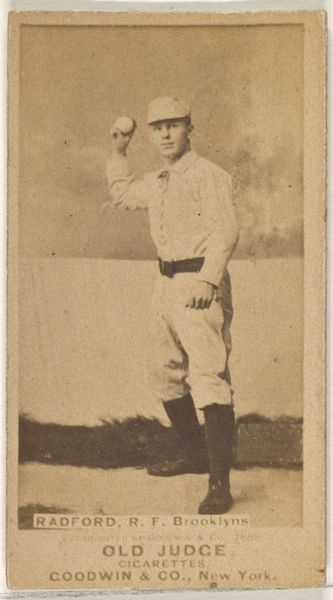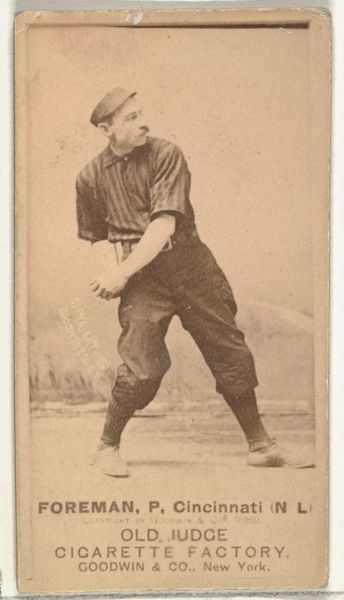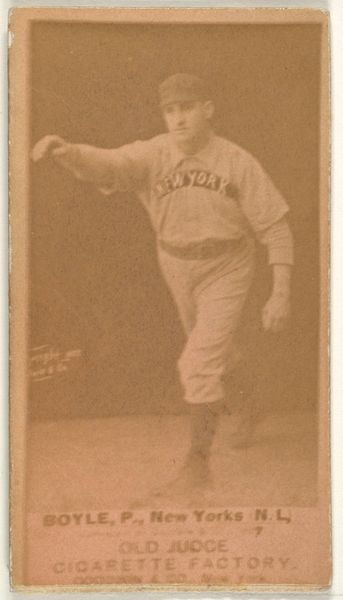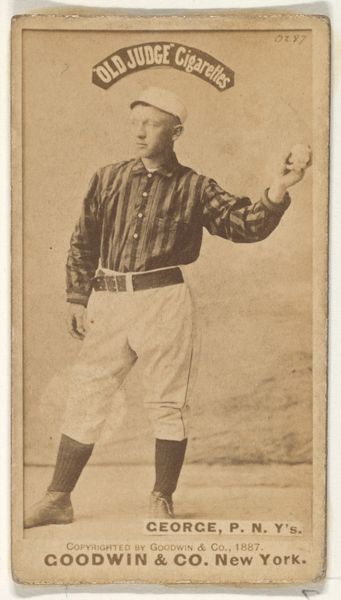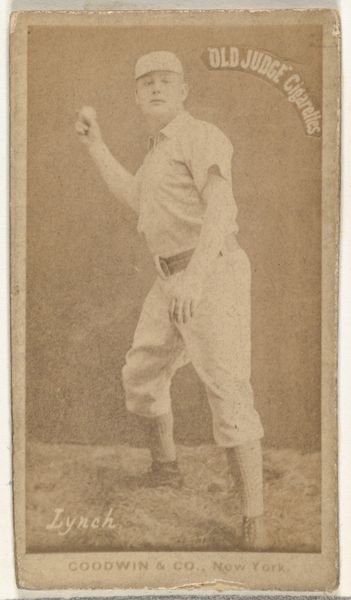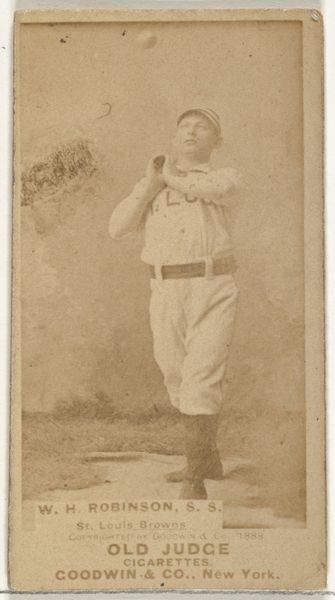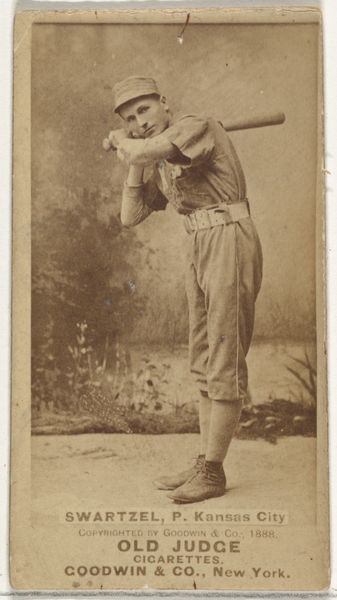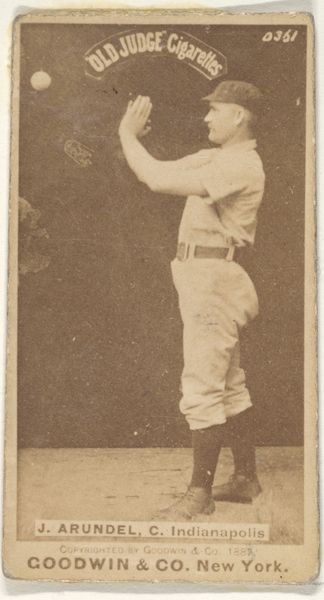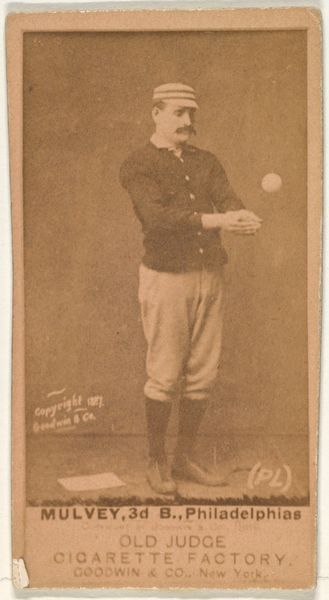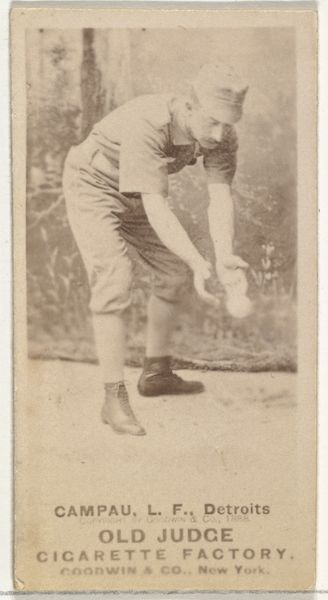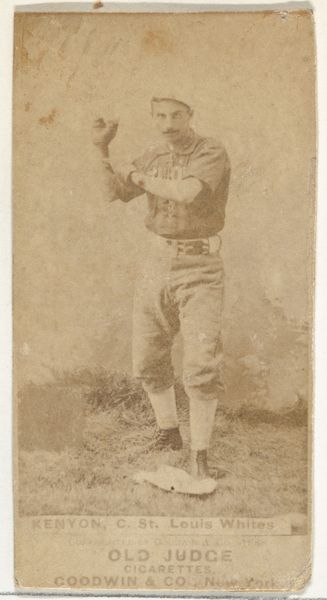
Lake, St. Louis, American League, from the White Border series (T206) for the American Tobacco Company 1909 - 1911
0:00
0:00
drawing, print
#
portrait
#
drawing
# print
#
baseball
#
portrait drawing
#
portrait art
Dimensions: Sheet: 2 5/8 x 1 7/16 in. (6.7 x 3.7 cm)
Copyright: Public Domain
Curator: Let’s spend a few moments reflecting on "Lake, St. Louis, American League," a baseball card dating from 1909 to 1911, produced by the American Tobacco Company. Editor: You know, I just love the nostalgia hit I get from this. The sepia tones and slightly faded edges make me think of summer days gone by, even though I'm no baseball fan. There’s a wistful quality to it, like remembering something wonderful just out of reach. Curator: Absolutely. We should note how these cards circulated at a critical moment for labor rights in the US. Often included in cigarette packs, their distribution highlights complex issues of child labor in both the tobacco and printing industries. These cards were literally commodities inserted into another consumable commodity to encourage more sales. Editor: Whoa, never thought of it that way. I'm struck by how idealized this guy's image is. There is a softness to it despite it being just a card! Curator: That's because portraiture, especially in commercial contexts, serves to build public personas. Consider the pose: seemingly candid, but carefully constructed. The angle of his body and open palm convey movement, the illusion of action, even though this is just a drawing. Editor: Yeah, he seems ready to leap off the card! The muted colors lend a sense of quiet determination. It feels less about aggressive competition, and more about personal resilience. Curator: Precisely. By linking this image to notions of athleticism, American industry and tobacco marketers alike were actively shaping the cultural values, and ideals around turn-of-the-century masculinity. Baseball’s symbolism gets interwoven with other issues. Editor: It's incredible how such a small artifact, designed for fleeting consumption, can hold so much meaning, even today. Now I can’t shake the labor associations that add more nuance to its appeal! Curator: Ultimately, the power of an object lies not just in its creation, but also in its continuing relevance through shifting perspectives across time. Editor: And the power of seeing old things in brand new light!
Comments
No comments
Be the first to comment and join the conversation on the ultimate creative platform.
